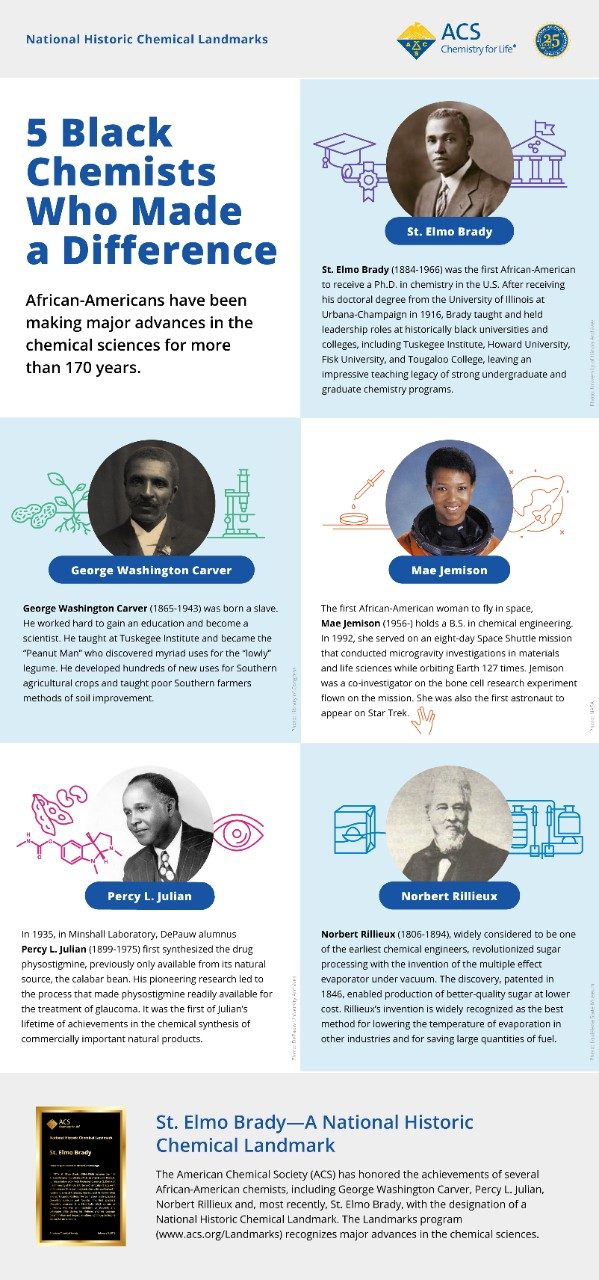Five black chemists who made a difference
Five Black Chemists Who Made a Difference
African-Americans have been making major advances in the chemical sciences for more than 170 years.
St. Elmo Brady
St. Elmo Brady (1884-1966) was the first African-American to receive a Ph.D. in chemistry in the U.S. After receiving his doctoral degree from the University of Illinois at Urbana-Champaign in 1916, Brady taught and held leadership roles at historically black universities and colleges, including Tuskegee Institute, Howard University, Fisk University, and Tougaloo College, leaving an impressive teaching legacy of strong undergraduate and graduate chemistry programs.
Mae Jemison
The first African-American woman to fly in space, Mae Jemison (1956-) holds a B.S. in chemical engineering. In 1992, she served on an eight-day Space Shuttle mission that conducted microgravity investigations in materials and life sciences while orbiting Earth 127 times. Jemison was a co-investigator on the bone cell research experiment flown on the mission. She was also the first astronaut to appear on Star Trek.
George Washington Carver
George Washington Carver (1865-1943) was born a slave. He worked hard to gain an education and become a scientist. He taught at Tuskegee Institute and became the “Peanut Man” who discovered myriad uses for the “lowly” legume. He developed hundreds of new uses for Southern agricultural crops and taught poor Southern farmers methods of soil improvement.
Percy L. Julian
In 1935, in Minshall Laboratory, DePauw alumnus Percy L. Julian (1899-1975) first synthesized the drug physostigmine, previously only available from its natural source, the calabar bean. His pioneering research led to the process that made physostigmine readily available for the treatment of glaucoma. It was the first of Julian’s lifetime of achievements in the chemical synthesis of commercially important natural products.
Norbert Rillieux
Norbert Rillieux (1806-1894), widely considered to be one of the earliest chemical engineers, revolutionized sugar processing with the invention of the multiple effect evaporator under vacuum. The discovery, patented in 1846, enabled production of better-quality sugar at lower cost. Rillieux’s invention is widely recognized as the best method for lowering the temperature of evaporation in other industries and for saving large quantities of fuel.
National Historic Chemical Landmarks Program
St. Elmo Brady—A National Historic Chemical Landmark
The American Chemical Society (ACS) has honored the achievements of several African-American chemists, including George Washington Carver, Percy L. Julian, Norbert Rillieux and, most recently, St. Elmo Brady, with the designation of a National Historic Chemical Landmark. The Landmarks program (www.acs.org/Landmarks) recognizes major advances in the chemical sciences.


